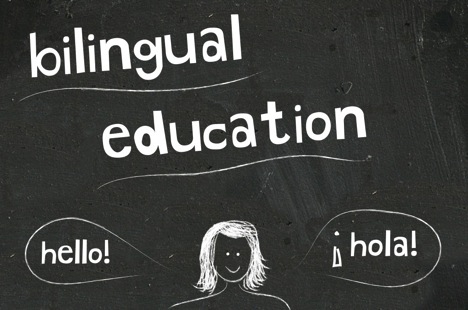Students learning English benefit greatly from bilingual education programs. In addition to gaining valuable language skills, studies show that students in bilingual programs not only catch up to their English immersion counterparts, but they eventually surpass them both academically and linguistically.
In California, English language learners make up 22.3 percent of total enrollment in California public schools, but the majority of these students are placed in English-only immersion programs, as is mandated by Proposition 227, the 1998 statute that banned bilingual education in schools.
Yet that ban will disappear if voters approve a new ballot initiative.
In recent years, there has been rise in the number of bilingual education programs in classrooms across the United States. In 2000, there were an estimated 260 dual-language programs in the U.S., and in 2011, that number reached 2,000.
A report done by the U.S. Department of Education and American Institute for Research found that during the 2012-13 school year, 39 states and Washington, D.C. offered dual-language education. Although Prop 227 banned bilingual education programs in California, some schools have found loopholes and are adopting dual-language programs.
Camino Nuevo Charter Academy in Los Angeles serves a high percentage of Latino English-language learners, and as a charter school it is exempt from California’s requirement for exclusive English education. Kindergartners at Camino Nuevo spend 80 percent of the day learning in Spanish, and each subsequent year, there is a 10 percent decrease in Spanish language instruction and a 10 percent increase in English language instruction.
In addition to the academic and professional advantage of speaking another language, Camino Nuevo’s literacy and language specialist Rachel Hazlehurst stressed the social benefits of bilingual education and the impact that it has on teachers.
““[When] children lose their home language skills, we as educators have a serious problem … fractured communities are created when families can no longer [talk] on a deep level about issues that matter.”
Fortunately, bilingual education may be making a comeback in California. The California Multilingual Education Act (Proposition 58) will be on the ballot Nov. 8, and if approved it will overturn the English-only law enacted by Prop 227.
Policy leaders have largely been supportive of Prop 58, as they have been “returning to the research about what works for ELL’s [English Language Learners]”.
For Hazlehurst, the biggest resistance to bilingual education has sometimes come from “Spanish-speaking Latino families who prefer that their children focus only on English in school because they will learn to speak Spanish at home.”
Understandably, these families are concerned with their child’s well being and know that speaking English is essential to their future academic and professional success. However, Hazlehurst stresses the need to partner with families and work together to understand the benefits of bilingual education and help them support their children once they are enrolled.
Giving students access to a bilingual education will allow them to reap the full benefits of the cultural and linguistic wealth already present in their communities.
Read more about the increase of dual-language programs nationwide here.
Brenda Benitez
Latest posts by Brenda Benitez (see all)
- Less Loans than You Might Think: Why Going to College is Still Worth it-If You Get a Degree - September 22, 2016
- Menos Préstamos de Lo Que Usted Pueda Creer: Por Qué Ir a La Universidad Todavía Vale La Pena, Si Se Obtiene Un Diploma - September 22, 2016
- Dual-Language Programs Reconsidered in California - August 23, 2016
- Programas Bilingües Reconsiderados en California - August 23, 2016
- New San Bernardino Charter School is Helping at-Risk Students get on the Right Path - August 17, 2016

